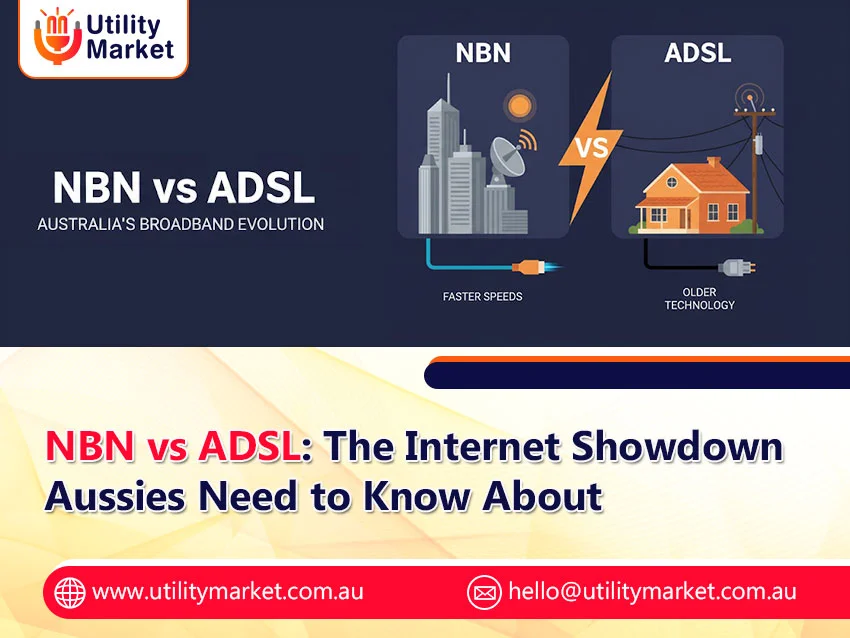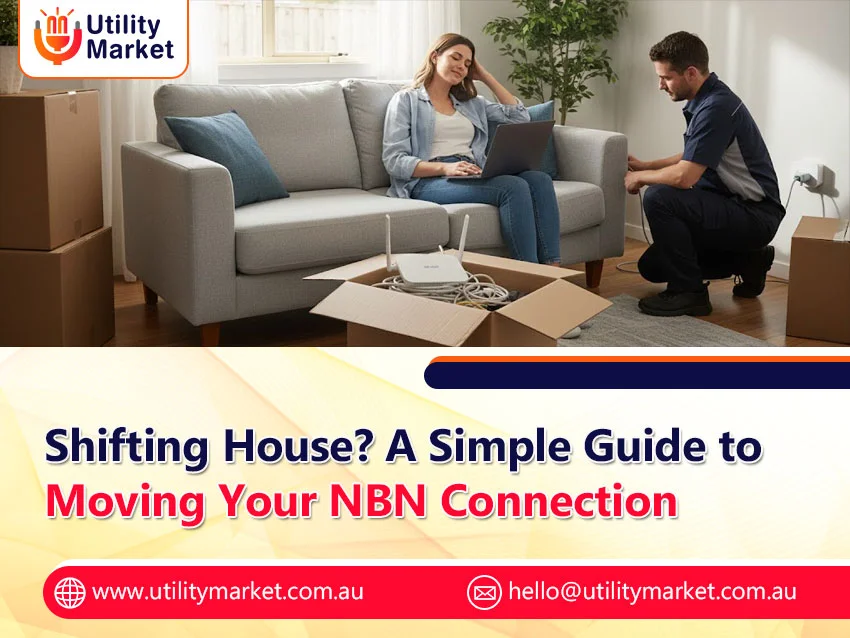
NBN vs ADSL: The Internet Showdown Aussies Need to Know About
Published November 11, 2025
It’s 2025! Most of us are balancing hybrid work models, a variety of AI tools, and homes packed with all kinds of smart devices. Everything from gaming to interviews is done online, and seamless internet connectivity is no longer a luxury rather it is an imperative. No surprise! Broadband searches continue to trend upward throughout the country. This is when NBN vs ADSL debate comes into picture!
The debate over NBN vs. ADSL is redefining broadband choices in every sphere of Australia. Before you set out to pick a suitable type of connection, you need to make sense of the core differences. Make speed comparisons and know how fibre stacks up. With this, you will be able to stay connected without any second-guessing.
If you are not sure which one meets your internet habits or the setup at your house, this blog explains every point clearly so that you make a wise decision and avoid unstable or slow internet.
NBN vs ADSL: Australia’s Broadband Face-Off
While Australians have already started ditching creaky copper for high-speed fibre, the NBN vs. ADSL debate still trips up many households and businesses. Knowing every connection type inside out, how they offer real-world speed comparisons, and what it truly means for your regular streaming, browsing, or remote work makes a huge difference.
Which Broadband Connection Type Is Right for You?
Factors to Consider while comparing NBN vs ADSL
A few important things to keep in mind while choosing between NBN vs. ADSL are your location, usage, and expectations. Below is a quick brief:
1. Your Location
- Check whether the National Broadband Network or Asymmetric Digital Subscriber Line will be phased out, discontinued, decommissioned, or shut down in your location.
- There are a number of remote locations that still use copper cable for internet, but most cities now have full government-backed broadband coverage.
2. Connection Speed Requirements
- For just basic emailing or browsing, either option will work! However, the national high-speed internet network still outshines its copper-line broadband counterpart.
- NBN is considered a better option for gaming, streaming, big families, or remote work.
3. Reliability
- Asymmetric Digital Subscriber Line is prone to peak-hour slowdowns or weather-related problems.
- National Broadband Network may be steadier in their uptimes, especially over HFC or FTTP, or faster.
4. Future-Forwardness
Looking to keep pace with the rapidly growing demands of tech requirements or smart homes? Rely on National Broadband Network for more!
If your address is in the NBN coverage area, your legacy broadband will be decommissioned after 18 months. You would then need to select a national fibre broadband provider, select the right plan, and organize installation. The best part? You can still keep your existing contact number and even upgrade your home network to smarter Wi-Fi gear.
FAQs About NBN and ADSL
When comparing NBN and ADSL, NBN Fixed Wireless provides a noticeable boost in speed. Connections can reach up to 75/10 Mbps, whereas ADSL2+ maxes out at around 25/2.5 Mbps. This means NBN Fixed Wireless generally delivers quicker download and upload speeds.
ADSL is only available in a few areas, mostly where NBN fixed-line connections aren’t possible, such as some rural regions. For most Australians, ADSL has been replaced by the NBN, and copper-based services are being gradually phased out. If your area doesn’t have fixed-line NBN, you may need to switch to alternatives like NBN Fixed Wireless or Sky Muster.
NBN plans typically begin at about the same price as ADSL, but they offer greater value and significantly faster speeds.
In a Nutshell
Already, National Broadband Network has rolled out almost everywhere in Australia. It is not just about the speed; your internet connection should complement how you live or work. So, if you’re on an Asymmetric Digital Subscriber Line, you can upgrade right away to be secure, connected, and future-prepared.
Follow Utility Market on LinkedIn for updates, tips, and industry news.




